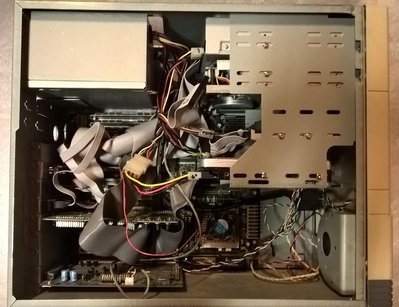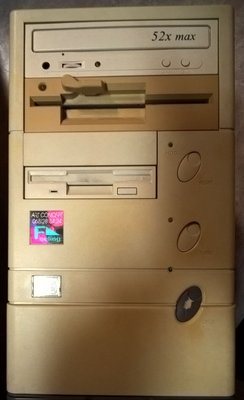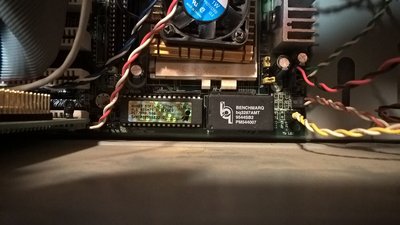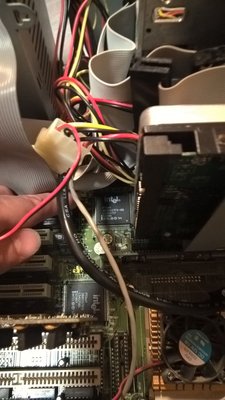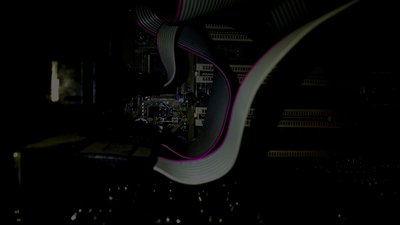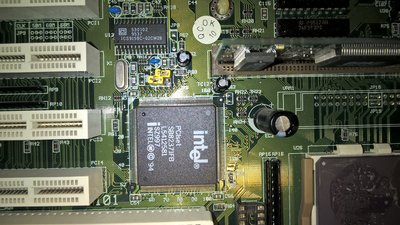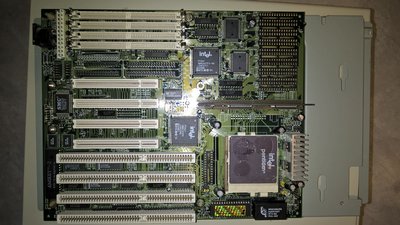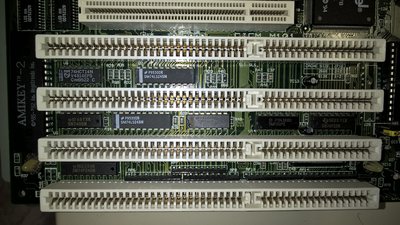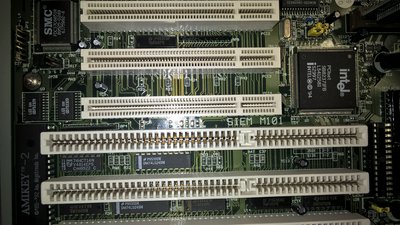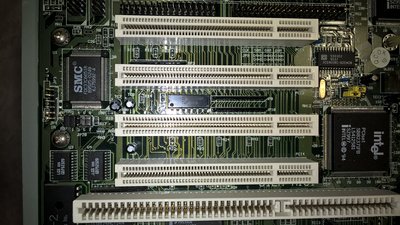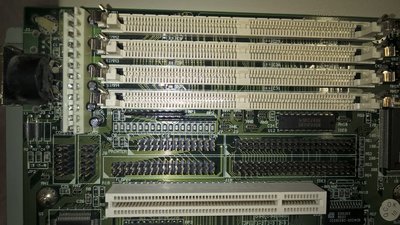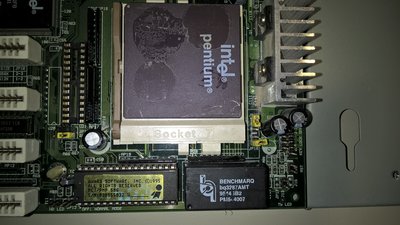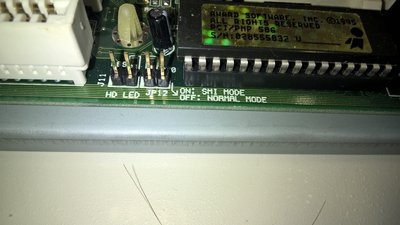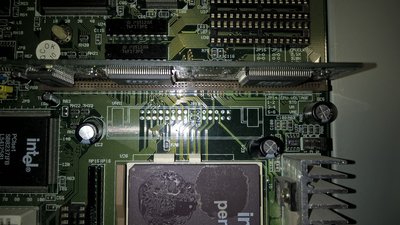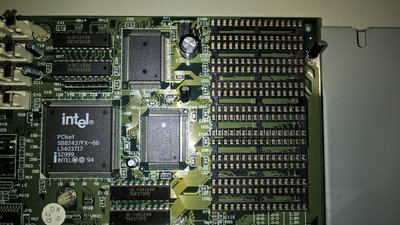First post, by Odiseo
I picked up a Socket 7 system at someone's place, and I plan on using it for word processing. I have run into problems with it, and I am out of ideas as to how to resolve these.
A first thing I should mention is that the guy I bought it from (understandably) took out the hard drive, so I have never actually seen this machine work under a real operating system. When I first started up the PC after I got it home I could, however, enter the BIOS (it said that the RTC battery was empty). I looked for details regarding the motherboard there, but I could not find any.
I turned the PC off, put in a hard drive (less than 6GB in size) I had lying around, and connected it to the board with the 40-wire IDE cable that was inside the case. I took care to connect the longest side of the cable onto the motherboard. I do not know whether all 40-wire cables are like the one in this system, but the connectors on this cable are shaped in such a way that you can plug them onto a motherboard or a hard drive "both" ways (I mean, you can turn the connector 180 degrees and it will still plug just fine onto either the motherboard or the hard drive). The strange thing was that with the hard drive connected to the motherboard, the PC would not boot. There was no BIOS screen, no beeps, no lights going on on the keyboard. The screen was black.
I turned the PC off again, disconnected the drive, turned on the PC once more, and there was the BIOS screen again.
I thought it would be a good idea to first replace the CMOS battery (it is empty, as I said). That was when I discovered that in very old systems like this one the CMOS memory was powered by another type of battery, called RTC battery (a little black rectangular box on the motherboard, see the third photo). I found the RTC battery on the board, and pried it off (it said 'benchmarq' on it and it was inside a socket --instead of being soldered onto the board). I reseated the RTC battery into its socket, hooked up the system to the power outlet, pressed the power button, and this time there was only a black screen. The hard drive was not connected to the motherboard at that time. And, yes, the graphics card was connected to the display. I pried the CMOS battery out off its socket once more, and left it out while I powered the system on again. Still, only a black screen.
I then read that on old systems like this one removing the CMOS battery is not enough to reset the BIOS. If what I read and remember is correct you also need to set certain jumper settings so that when you power on the system (without the CMOS battery) the BIOS will be reset. Then you power off the system again, reseat the RTC battery (or place a new one), and you can use the system with its BIOS reset. the thing here is that I am not sure of the brand and model of the motherboard. I wrote down some numbers that I found on the motherboard, and from what I found on the internet I suspect the board is an Intel 430FX, but I am not sure. The brand and model of the system as a whole are a complete mystery to me.
These numbers --all of which I found on black chips on the motherboard-- are the following.
PCIset
S82438FX
PCIset
SB82437FX-66 (see fourth photo)
PCIset
SB82371FB
I have several questions.
1) Identify the brand and the model of the motherboard AND the system.
2) Tell me what I am doing wrong here. Is there a possibility the system broke down? Or does it refuse to boot because the BIOS has not been reset? Or because the battery is completely dead?
3) Is what I said above regarding the jumper settings correct? Can I expect the BIOS to be reset when I set the correct jumper settings? In that case, which jumper settings would I have to set, and where exactly on the board?
4) When the system finally boots, how can I get it to recognize a hard drive?
PS: at the back of the motherboard there are some pins where jumpers can be set (cf the last picture). I looked at the schematics of two versions of this board --Advanced/EV (Endeavor) and Advanced/AS (Atlantis)-- and on the basis of what I read I had the impression these are the pins I am looking for. You can see these pins in the file 'jumper_settings.jpg'. The photo is mostly very dark; I had to adjust the gamma to make the numbers nex to the pins come through clearly.
